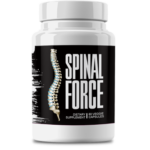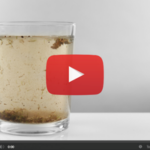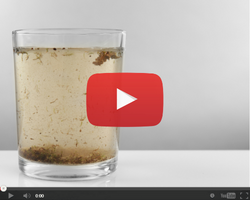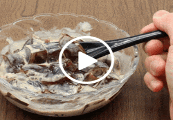This Village-Made Chinese Pain Reliever Eliminates Back And Joint Pain!
Natural Remedies for Patellar Tendon Pain Relief
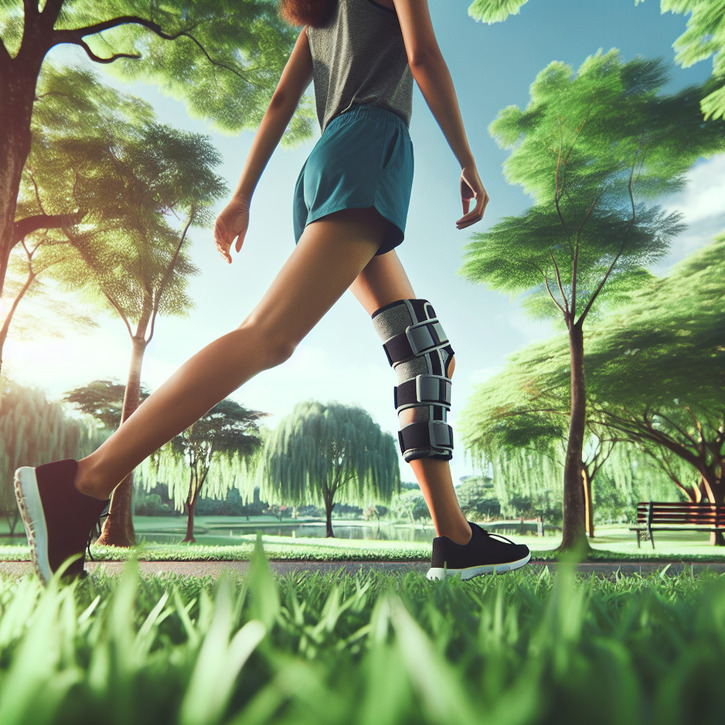
Understanding Patellar Tendon Pain
What is Patellar Tendon Pain?
Patellar tendon pain, often referred to as "jumper's knee," is a condition that affects the tendon connecting your kneecap (patella) to your shinbone. This pain typically arises due to overuse or repetitive stress on the knee, leading to inflammation and discomfort. Athletes, particularly those engaged in sports requiring frequent jumping or running, are most susceptible. However, anyone can experience patellar tendon pain if they perform activities that put excessive pressure on the knees.
Common Causes of Patellar Tendon Pain
The primary cause of patellar tendon pain is repetitive strain on the knee joint. Activities that involve jumping, squatting, or running can lead to micro-tears in the tendon, causing pain and inflammation. Additionally, poor posture, inadequate footwear, and muscle imbalances can exacerbate the condition. Over time, if left untreated, these small injuries can accumulate, leading to chronic pain and, in severe cases, tendon degeneration.
Symptoms and Diagnosis
Common symptoms of patellar tendon pain include a dull ache beneath the kneecap, swelling, and tenderness along the tendon. The pain might intensify with physical activity or prolonged periods of sitting. Diagnosing patellar tendon pain typically involves a physical examination, during which a healthcare provider assesses knee movement and tenderness. In some cases, imaging tests like MRI or ultrasound may be necessary to confirm the diagnosis and rule out other conditions.
The Role of Lifestyle in Managing Patellar Tendon Pain
Importance of Physical Activity
Engaging in regular physical activity is crucial for managing patellar tendon pain. Low-impact exercises, such as swimming or cycling, can help maintain joint mobility without putting excessive strain on the knee. Consistency in physical activity strengthens the muscles surrounding the knee, providing better support and reducing the risk of further injury. It's important to gradually increase the intensity of workouts to avoid overloading the tendon.
Diet and Nutritional Support
A balanced diet rich in anti-inflammatory foods can significantly aid in managing patellar tendon pain. Incorporate foods high in omega-3 fatty acids, antioxidants, and vitamins C and E to promote tendon health and reduce inflammation. Nutrient-dense foods like leafy greens, berries, nuts, and fatty fish can play a pivotal role in your recovery. Additionally, staying hydrated is essential for overall joint function and muscle performance.
Sleep and Recovery
Adequate sleep is vital for the body's natural healing processes. During sleep, the body repairs damaged tissues, including tendons. Aim for 7-9 hours of quality sleep per night to support recovery from patellar tendon pain. Establishing a regular sleep schedule, creating a restful environment, and avoiding stimulants before bedtime can enhance sleep quality, promoting better overall health and pain relief.
Stress Management Techniques
Chronic stress can exacerbate pain and hinder the healing process. Incorporating stress management techniques such as mindfulness meditation, deep breathing exercises, and progressive muscle relaxation can help reduce stress levels. Regular practice of these techniques can improve your mental well-being, allowing your body to focus on healing and recovery. Remember, managing stress is an integral part of a holistic approach to pain management.
Top Natural Remedies for Patellar Tendon Pain Relief
Ice and Heat Therapy
Ice and heat therapy are effective methods for alleviating patellar tendon pain. Applying ice packs to the affected area can reduce inflammation and numb the pain. Use ice therapy for 15-20 minutes several times a day, especially after physical activity. Heat therapy, on the other hand, can help relax and loosen tissues and stimulate blood flow to the area. Alternate between ice and heat therapy to maximize pain relief and promote healing.
Herbal Supplements
Herbal supplements such as turmeric, ginger, and boswellia have anti-inflammatory properties that can help manage patellar tendon pain. Turmeric contains curcumin, a compound known for its powerful anti-inflammatory effects. Ginger is another excellent option, offering both anti-inflammatory and analgesic benefits. Boswellia, also known as Indian frankincense, can reduce inflammation and improve blood flow to the affected tendon, aiding in the healing process.
Essential Oils for Pain Relief
Essential oils like peppermint, eucalyptus, and lavender can provide natural pain relief for patellar tendon pain. Peppermint oil has a cooling effect that can soothe sore muscles and reduce inflammation. Eucalyptus oil is known for its anti-inflammatory and analgesic properties, making it effective for managing pain. Lavender oil can help relax muscles and reduce pain, promoting a sense of calm and well-being.
Exercise and Stretching Routines
Gentle Stretching Exercises
Incorporating gentle stretching exercises into your routine can help alleviate patellar tendon pain and improve flexibility. Focus on stretches that target the quadriceps, hamstrings, and calf muscles. Hold each stretch for 20-30 seconds and repeat several times. Stretching helps increase blood flow to the affected area, reducing stiffness and promoting healing. Be sure to perform stretches in a controlled and gentle manner to avoid further injury.
Strengthening Exercises for the Knee
Strengthening exercises are essential for supporting the knee joint and reducing patellar tendon pain. Exercises such as leg presses, squats, and lunges can help build muscle strength around the knee. Start with low resistance and gradually increase as your strength improves. Consistent strength training can enhance the stability of the knee, preventing further strain on the patellar tendon and promoting long-term recovery.
The Role of Yoga in Pain Management
Yoga can be a beneficial addition to your routine for managing patellar tendon pain. Specific yoga poses, such as the Warrior Pose, Triangle Pose, and Child's Pose, can help stretch and strengthen the muscles around the knee. Yoga also promotes relaxation and stress reduction, aiding in overall pain management. Practicing yoga regularly can improve flexibility, balance, and muscle strength, contributing to the prevention of further knee injuries.
The Benefits of Alternative Therapies
Acupuncture for Patellar Tendon Pain
Acupuncture is an ancient Chinese therapy that can effectively manage patellar tendon pain. By inserting thin needles into specific points on the body, acupuncture stimulates blood flow and releases endorphins, the body's natural painkillers. This therapy can reduce inflammation and promote healing in the affected tendon. Many people find acupuncture to be a valuable complementary treatment for pain management and overall well-being.
Massage Therapy Techniques
Massage therapy can provide significant relief for patellar tendon pain. Techniques such as deep tissue massage, myofascial release, and trigger point therapy can help reduce muscle tension, improve blood flow, and alleviate pain. Regular massage sessions can also enhance flexibility and promote relaxation. Working with a skilled massage therapist ensures that the techniques used are appropriate for your condition and contribute to your recovery.
Chiropractic Care
Chiropractic care focuses on the alignment of the musculoskeletal system, which can be beneficial for patellar tendon pain. Chiropractors use manual adjustments to correct misalignments and improve joint function. These adjustments can help alleviate pain, reduce inflammation, and enhance mobility. Chiropractic care, combined with other natural remedies, can provide a comprehensive approach to managing patellar tendon pain and promoting overall health.
Using Home Remedies for Immediate Relief
Epsom Salt Baths
Epsom salt baths are a simple yet effective home remedy for patellar tendon pain. Epsom salt contains magnesium sulfate, which can help reduce inflammation and relax muscles. Add two cups of Epsom salt to a warm bath and soak for 20-30 minutes. The warm water and soothing properties of the salt can provide immediate relief from pain and discomfort. Regular Epsom salt baths can also promote overall muscle relaxation and recovery.
Turmeric and Ginger Applications
Topical applications of turmeric and ginger can provide natural relief for patellar tendon pain. Create a paste by mixing turmeric powder with coconut oil and apply it to the affected area. Turmeric's anti-inflammatory properties can help reduce pain and swelling. Similarly, ginger can be grated and mixed with a carrier oil to create a soothing application. Both of these natural ingredients can be used together or separately to manage pain effectively.
DIY Pain Relief Creams
Creating your own pain relief creams using natural ingredients can be an effective way to manage patellar tendon pain. Combine beeswax, coconut oil, and essential oils such as peppermint, eucalyptus, and lavender to make a soothing cream. Apply the cream to the affected area several times a day for relief. These DIY creams can provide a natural alternative to over-the-counter pain medications, promoting healing and reducing discomfort.
Preventing Future Patellar Tendon Issues
Proper Warm-Up Techniques
Proper warm-up techniques are essential for preventing future patellar tendon issues. Before engaging in physical activity, spend at least 10-15 minutes warming up your muscles. Focus on dynamic stretches and movements that mimic the activity you'll be performing. A thorough warm-up increases blood flow to the muscles and tendons, reducing the risk of injury. Consistently incorporating warm-up routines can help maintain knee health and prevent pain.
The Importance of Good Footwear
Good footwear plays a crucial role in preventing patellar tendon pain. Choose shoes that provide adequate support, cushioning, and stability for your specific activity. Replace worn-out shoes regularly to ensure optimal support. Proper footwear can help distribute pressure evenly across the feet and reduce strain on the knees. Investing in high-quality shoes can significantly contribute to the prevention of patellar tendon issues and overall joint health.
Long-term Exercise Plans
Developing a long-term exercise plan is key to preventing patellar tendon pain. Include a mix of strength training, flexibility exercises, and cardiovascular activities in your routine. Consistency is crucial, so aim to exercise regularly without overloading the knee joint. Gradual progression in intensity and duration helps build strength and resilience. A well-rounded exercise plan can enhance overall fitness, support knee health, and reduce the risk of future tendon problems.
When to Seek Professional Help
Recognizing Severe Symptoms
While natural remedies can be effective, it's essential to recognize severe symptoms that require professional intervention. If you experience intense pain, significant swelling, or difficulty moving the knee, seek medical help immediately. These symptoms could indicate more serious conditions like tendon rupture or severe inflammation. Prompt medical attention ensures accurate diagnosis and appropriate treatment, preventing further complications.
Consulting a Physical Therapist
Consulting a physical therapist can be beneficial for managing patellar tendon pain. A physical therapist can design a personalized rehabilitation program tailored to your needs. This program may include specific exercises, manual therapy, and education on proper movement patterns. Working with a physical therapist ensures that you receive expert guidance and support throughout your recovery journey, promoting optimal healing and preventing future injuries.
Surgical Options: When Natural Remedies Aren't Enough
In severe cases where natural remedies and conservative treatments fail to provide relief, surgical options may be considered. Surgical procedures for patellar tendon pain include tendon repair, debridement, or realignment. These procedures aim to address the underlying issues and restore tendon function. Surgery is typically considered a last resort and is followed by a comprehensive rehabilitation program to ensure successful recovery and long-term pain relief.


